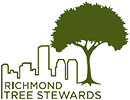
Ash trees (Fraxinus species) occur in many North American forest ecosystems, are widely planted in urban areas and are a valuable commercial timber species. In addition the seed is eaten by many birds, some mice and some squirrels. Native ashes are host plants for many insect larvae which then become an important food source for birds, particularly newly hatched birds and fledglings. Ash trees support at least 150 species of moth and butterfly larvae.
Emerald Ash Borer Damage
This resource is now threatened by the Emerald ash borer (EAB), Agrilus planipennis, an exotic beetle (Asian) discovered in Michigan in the summer of 2002. EAB probably arrived in the United States on solid wood packing material carried in cargo ships or airplanes originating in its native Asia. The insect was found in Ohio in 2003, northern

Indiana in 2004, northern Illinois and Maryland in 2006, western Pennsylvania and West Virginia in 2007, Wisconsin, Missouri and Virginia in summer 2008, and Minnesota and New York in the spring of 2009. The insect has already destroyed millions of ash trees. It is imperative that these insect populations be contained in order to stop devastation of the ash trees in North America.
Emerald ash borer was first detected in in Virginia (Fairfax County) in 2003 and was successfully eradicated. On July 14, 2008, emerald ash borer was reconfirmed in Fairfax County. In 2012 EAB was found in a separate location in Virginia, Pittsylvania, Halifax, and Charlotte counties
As of July 2012 Emerald ash borer has not been reported in the Richmond area. Green ash, Fraxinus pennsylvanica, comprises an estimated 3% of street trees in the city of Richmond.
Identification and distribution of ash trees
Ash trees have a unique combination of characteristics: opposite branching and compound leaves. Ash trees are distributed throughout the eastern United States (with the exception of southern Florida) and in states just west of the Mississippi River. These trees are more numerous in the northeast states, Minnesota and northern Michigan.
Excellent descriptions and pictures of ash trees: http://treedoctor.anr.msu.edu/ash/ashtree_id.html How does EAB spread?The adult insect lays eggs on ash trees. The eggs then hatch and the larvae tunnel under the bark, disrupting the flow of water and nutrients in the tree. This is when the damage is done. Larvae over winter under the bark; adults emerge in spring and start the cycle again. Adults also nibble on the leaves, but this has little effect on the tree.
The insects may move as much as 10 – 20 miles per year, but people move the insect much faster by transporting wood, firewood and nursery stock.
Stop the Beetle
- Know where your firewood comes from
- Keep it in the county it was bought in
- Do not take firewood along when camping; purchase at your destination and burn it there.
Characteristics of Emerald Ash Borer Damage
These symptoms on an ash tree are indicative of EAB infestation:
- Distinct D-shaped exit holes in the bark (where the mature insect exits)
- S-shaped tunnels on surface under the bark
- Sprout growth at the tree base
- Unusual activity by woodpeckers
- Die-back on the top third of the tree
- Vertical splits in the bark
This site has excellent visuals of the above symptoms:
http://www.emeraldashborer.info/files/E-2938.pdf
Control Methods
Treatment – There are insecticides that can be used to control EAB, but as with other systemic chemicals, they are not selective for the emerald ash borer. Some insecticides are available to homeowners; others are available only to professionals. Treatment is necessary in quarantined areas only and must be applied annually to provide protection. Success of treatment is dependent in tree health and amount of damage done prior to treatment. Since treatments must be applied annually, the cost of the treatment is usually greater than the value of the tree.
Removal – Trees can be removed and the wood chipped. States with quarantine areas may have specific regulations regarding use of ash wood or disposal after removal.
Replacement – Replacing ash trees with other species will help stop the spread of the beetle.
Quarantines
Restrictions are in effect to limit the transport of logs, firewood and nursery stock. See the quarantine map at http://www.emeraldashborer.info/files/MultiState_EABpos.pdf
Additional information from the U.S. Forest Service: https://www.fs.fed.us/fs-tags/stop-beetle
Emerald Ash Borer
Ash trees (Fraxinus) grow in many North American forest ecosystems and are widely planted in urban areas. They are also a valuable commercial timber species. In addition the seed is eaten by many birds, some mice and some squirrels. Native ashes are host plants for many insect larvae which then become an important food source for birds, particularly newly hatched birds and fledglings. Ash trees support at least 150 species of moth and butterfly larvae.

